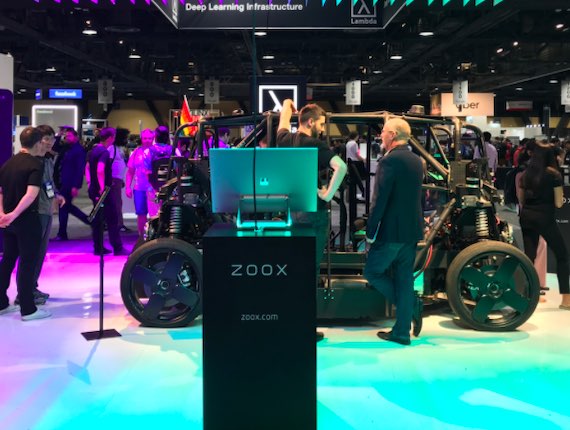Cannon-Brookes says Zoox “robot” cars will be on the road within two years

Cannon-Brookes, through his private investment company Grok Ventures, (which has also backed the project to build the world’s biggest solar farm and battery in the Northern Territory) is a major investor in the US-based self-driving start-up Zoox, and led a major funding round earlier this year.
Not much is known about Zoox and the details of its technology, but the company’s web-site promises it is approaching driving autonomously “in ways that no one else has shown.”
“We are driving in cities and on highways. Making unprotected lefts and rights on red. Yielding to pedestrians and passing double parked vehicles,” it says.
Cannon-Brookes – in an on-stage discussion with Smart Energy Council director Simon Holmes a Court at the Smart Energy Summit in Sydney on Tuesday – did not give a lot away about what this new development will look like.
But he did give a hint of just how much of a change the technology could herald, and just how close it is to being a thing.
“Transportation is very simple and it hasn’t changed much in a long time,” Cannon-Brookes said. “There’s a combustion engine, there’s four wheels and there’s a driver.”
It’s not entirely clear how many wheels the vehicle, or robot, will have, but while it’s most likely to be four, Zoox is not interested in just upgrading another company’s model.
That’s because has no intention of ever having a driver, which means in turn that it will not be restricted by current car or transport designs.

Images of the technology used that have been revealed – mapping streets in San Francisco (above), and in expo displays (below) – give little insight into what the final product will look like, apart from the promise it will use cameras, lidar and radar, and sophisticated AI technology.

“How will it work?” Holmes a Court asked.
“You will pull out a phone, and a robot will pull up, and you’ll get in, and then you’ll get out” Cannon Brookes said.
“The robot being a car?” Holmes a Court asked
“The difference between a robot and a car is complicated. It depends on your definition of a car,” Cannon Brookes said.
“What does this car do?”
“It’s job is to get from A to B as comfortably as possible. There will be thousands of them or more, picking people up and dropping them off. It’s going to be a huge environmental win, it will be a huge health care win. Tens of thousands of people die on roads each year. They shouldn’t, we don’t accept it in air travel, we shouldn’t in road travel.”
How close is it to coming to reality?
Cannon-Brookes says the technology is already on the road, but in highly supervised situations. He expected the real thing will be on the road in “under” 24 months.
“We are on the road today, in a major way, but it’s got to be an order of magnitude safer than regular vehicles,” he said. “It’s finding the limitations of human thinking …. but it will have massive outcomes. The ‘what if we are right’ is far more powerful than ‘what if we are wrong’.”
Futurists such as Stanford University’s Tony Seba have predicted that by 2030, huge numbers of vehicles will not be privately owned, because they will form part of fleets.
And because these cars – expected to be automous – can be used most of the day, the actual cost of individual trips will be a fraction of what they are now. Even companies such as AGL, the big Australian utility, expect that one third of cars will not be privately owned by around 2030.
See also: The Driven Podcast: Tony Seba on why all new cars will be electric by 2025
And: The Driven Podcast: Why your EV will also be a “virtual power plant”

Giles Parkinson is founder and editor of The Driven, and also edits and founded Renew Economy and One Step Off The Grid. He has been a journalist for 35 years and is a former business and deputy editor of the Australian Financial Review.
No comments:
Post a Comment